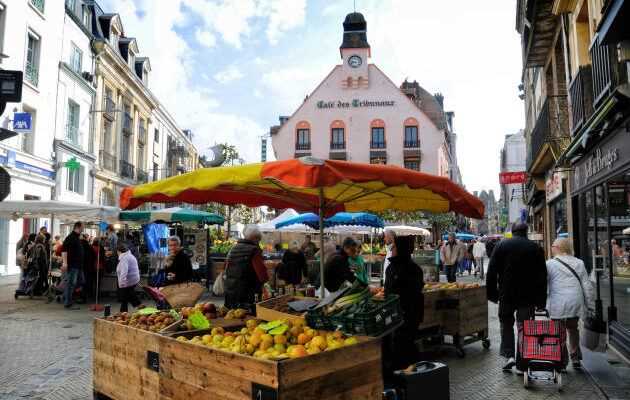ReportageOf course, you have to do without a museum, a restaurant and come back at curfew time, but here, facing the English Channel, between lunch on the pebble beach, invigorating walks on the cliffs and architectural discoveries, life has (almost) the taste of before.
Some only stop in Dieppe, a port and industrial city, by chance, before taking the ferry to the United Kingdom. They should take the time to walk along the quays and cliffs that the Impressionists loved, get lost in the old city steeped in history and visit the many gallery owners. The city of 30,000 inhabitants is also a merchant city, crossed by a dynamic shopping artery and full of original shops.
Day 1
8 hours Potron-minet at the market
The days ending at 6 p.m., you might as well start them early. The people of Dieppe like to stress that their market was named “the most beautiful in France” by Jean-Pierre Pernaut’s television news. In any case, the 200 or so stalls extend into the busy Grande Rue, which spills over into several adjacent streets. The atmosphere is sonorous, punctuated by the bells of the Saint-Rémy church, the cries of seagulls and the arrests of merchants. The black pudding is in the spotlight, fresh, fried, with onions, as well as local cheeses (Neufchâtel, Camembert, livarot), butter and crème fraîche because we are in Normandy, while the early produce from the nearby campaigns exhibit their production. end of winter, leeks, potatoes, endives, black radishes.
Regulars give their advice: stop by the stand where mushrooms are sold in Varengeville-sur-Mer, a nearby village, or at Céline, who herself smokes salmon, herring and whelks. Café des Tribunaux, a local institution, sells take-out coffees. Shopping continues at the fish market in the port, where amateurs, in stiff competition from the gulls, select the sole, plaice, whiting and scallops brought back by the trawlers the same morning.
10:30 a.m. A tour of the port
Let us distance ourselves from the crowd and walk along the quays, at the foot of the old town, where the café terraces normally spread out. Dieppe has no less than four ports, dedicated respectively to trade, fishing, cross-Channel traffic and yachting. This last basin, the oldest, had the honor of a painting by Camille Pissarro, owned by the city museum. Circumstances require, we will be satisfied with its reproduction, exhibited at the place where it was painted, in 1902.
The port landscape hardly seems to have changed in nearly 120 years: the white sailboats respond to the chalky complexion of the cliffs, the dark roofs overhang the brick houses, while Notre-Dame-de-Bon-Secours watches over the whole. like a lookout.
You have 72.55% of this article to read. The rest is for subscribers only.
